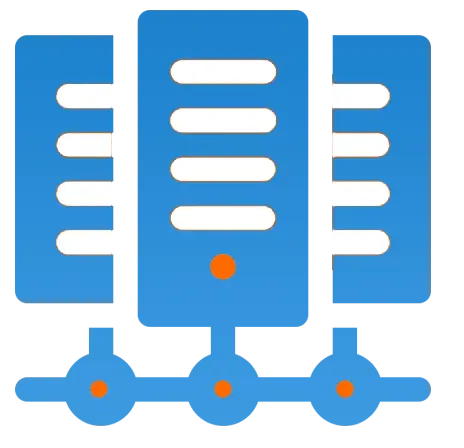Get 69% Off on Cloud Hosting : Claim Your Offer Now!
- Products
-
Compute
Compute
- Predefined TemplatesChoose from a library of predefined templates to deploy virtual machines!
- Custom TemplatesUse Cyfuture Cloud custom templates to create new VMs in a cloud computing environment
- Spot Machines/ Machines on Flex ModelAffordable compute instances suitable for batch jobs and fault-tolerant workloads.
- Shielded ComputingProtect enterprise workloads from threats like remote attacks, privilege escalation, and malicious insiders with Shielded Computing
- GPU CloudGet access to graphics processing units (GPUs) through a Cyfuture cloud infrastructure
- vAppsHost applications and services, or create a test or development environment with Cyfuture Cloud vApps, powered by VMware
- Serverless ComputingNo need to worry about provisioning or managing servers, switch to Serverless Computing with Cyfuture Cloud
- HPCHigh-Performance Computing
- BaremetalBare metal refers to a type of cloud computing service that provides access to dedicated physical servers, rather than virtualized servers.
-
Storage
Storage
- Standard StorageGet access to low-latency access to data and a high level of reliability with Cyfuture Cloud standard storage service
- Nearline StorageStore data at a lower cost without compromising on the level of availability with Nearline
- Coldline StorageStore infrequently used data at low cost with Cyfuture Cloud coldline storage
- Archival StorageStore data in a long-term, durable manner with Cyfuture Cloud archival storage service
-
Database
Database
- MS SQLStore and manage a wide range of applications with Cyfuture Cloud MS SQL
- MariaDBStore and manage data with the cloud with enhanced speed and reliability
- MongoDBNow, store and manage large amounts of data in the cloud with Cyfuture Cloud MongoDB
- Redis CacheStore and retrieve large amounts of data quickly with Cyfuture Cloud Redis Cache
-
Automation
Automation
-
Containers
Containers
- KubernetesNow deploy and manage your applications more efficiently and effectively with the Cyfuture Cloud Kubernetes service
- MicroservicesDesign a cloud application that is multilingual, easily scalable, easy to maintain and deploy, highly available, and minimizes failures using Cyfuture Cloud microservices
-
Operations
Operations
- Real-time Monitoring & Logging ServicesMonitor & track the performance of your applications with real-time monitoring & logging services offered by Cyfuture Cloud
- Infra-maintenance & OptimizationEnsure that your organization is functioning properly with Cyfuture Cloud
- Application Performance ServiceOptimize the performance of your applications over cloud with us
- Database Performance ServiceOptimize the performance of databases over the cloud with us
- Security Managed ServiceProtect your systems and data from security threats with us!
- Back-up As a ServiceStore and manage backups of data in the cloud with Cyfuture Cloud Backup as a Service
- Data Back-up & RestoreStore and manage backups of your data in the cloud with us
- Remote Back-upStore and manage backups in the cloud with remote backup service with Cyfuture Cloud
- Disaster RecoveryStore copies of your data and applications in the cloud and use them to recover in the event of a disaster with the disaster recovery service offered by us
-
Networking
Networking
- Load BalancerEnsure that applications deployed across cloud environments are available, secure, and responsive with an easy, modern approach to load balancing
- Virtual Data CenterNo need to build and maintain a physical data center. It’s time for the virtual data center
- Private LinkPrivate Link is a service offered by Cyfuture Cloud that enables businesses to securely connect their on-premises network to Cyfuture Cloud's network over a private network connection
- Private CircuitGain a high level of security and privacy with private circuits
- VPN GatewaySecurely connect your on-premises network to our network over the internet with VPN Gateway
- CDNGet high availability and performance by distributing the service spatially relative to end users with CDN
-
Media
-
Analytics
Analytics
-
Security
Security
-
Network Firewall
- DNATTranslate destination IP address when connecting from public IP address to a private IP address with DNAT
- SNATWith SNAT, allow traffic from a private network to go to the internet
- WAFProtect your applications from any malicious activity with Cyfuture Cloud WAF service
- DDoSSave your organization from DoSS attacks with Cyfuture Cloud
- IPS/ IDSMonitor and prevent your cloud-based network & infrastructure with IPS/ IDS service by Cyfuture Cloud
- Anti-Virus & Anti-MalwareProtect your cloud-based network & infrastructure with antivirus and antimalware services by Cyfuture Cloud
- Threat EmulationTest the effectiveness of cloud security system with Cyfuture Cloud threat emulation service
- SIEM & SOARMonitor and respond to security threats with SIEM & SOAR services offered by Cyfuture Cloud
- Multi-Factor AuthenticationNow provide an additional layer of security to prevent unauthorized users from accessing your cloud account, even when the password has been stolen!
- SSLSecure data transmission over web browsers with SSL service offered by Cyfuture Cloud
- Threat Detection/ Zero DayThreat detection and zero-day protection are security features that are offered by Cyfuture Cloud as a part of its security offerings
- Vulnerability AssesmentIdentify and analyze vulnerabilities and weaknesses with the Vulnerability Assessment service offered by Cyfuture Cloud
- Penetration TestingIdentify and analyze vulnerabilities and weaknesses with the Penetration Testing service offered by Cyfuture Cloud
- Cloud Key ManagementSecure storage, management, and use of cryptographic keys within a cloud environment with Cloud Key Management
- Cloud Security Posture Management serviceWith Cyfuture Cloud, you get continuous cloud security improvements and adaptations to reduce the chances of successful attacks
- Managed HSMProtect sensitive data and meet regulatory requirements for secure data storage and processing.
- Zero TrustEnsure complete security of network connections and devices over the cloud with Zero Trust Service
- IdentityManage and control access to their network resources and applications for your business with Identity service by Cyfuture Cloud
-
-
Compute
- Solutions
-
Solutions
Solutions
-
 Cloud
Hosting
Cloud
Hosting
-
 VPS
Hosting
VPS
Hosting
-
GPU Cloud
-
 Dedicated
Server
Dedicated
Server
-
 Server
Colocation
Server
Colocation
-
 Backup as a Service
Backup as a Service
-
 CDN
Network
CDN
Network
-
 Window
Cloud Hosting
Window
Cloud Hosting
-
 Linux
Cloud Hosting
Linux
Cloud Hosting
-
Managed Cloud Service
-
Storage as a Service
-
 VMware
Public Cloud
VMware
Public Cloud
-
 Multi-Cloud
Hosting
Multi-Cloud
Hosting
-
 Cloud
Server Hosting
Cloud
Server Hosting
-
 Bare
Metal Server
Bare
Metal Server
-
 Virtual
Machine
Virtual
Machine
-
 Magento
Hosting
Magento
Hosting
-
Remote Backup
-
 DevOps
DevOps
-
 Kubernetes
Kubernetes
-
 Cloud
Storage
Cloud
Storage
-
NVMe Hosting
-
 DR
as s Service
DR
as s Service
-
-
Solutions
- Marketplace
- Pricing
- Resources
- Resources
-
By Product
Use Cases
-
By Industry
- Company
-
Company
Company
-
Company
3 Cloud Trends to Watch in 2023
Modern technology is not complete without cloud computing, which enables companies to take use of the internet’s power and accomplish their objectives more quickly and adaptably. The cloud is always changing, presenting new possibilities and difficulties that companies must be aware of to remain competitive. Therefore, it’s essential for businesses to stay current with the latest cloud trends if they want to take advantage of cloud computing and stay relevant.
It is anticipated that 2023 will bring about substantial developments and improvements in the world of cloud computing that will influence how organizations operate in the future. We’ve highlighted three major cloud trends that you should be on the lookout for in order to keep you in the know. These developments include the development of serverless computing, edge computing, and multi-cloud solutions. As organizations continue their migration to the cloud, each of these developments offers certain possibilities and difficulties that they should take into account. Continue reading to learn more about these patterns and their effects.
Crisis Management
The COVID-19 epidemic has had a major effect on the world economy and changed how businesses function. In order to continue operations, many businesses have had to swiftly adjust to remote labor and depend increasingly heavily on cloud computing. As a result, cloud acceptance and usage have increased dramatically. According to Gartner, the global public cloud services market will rise by 17.3% by 2023 to reach $623.3 billion.
However, as cloud computing is used more frequently, effective crisis management techniques are required to handle potential disruptions. Businesses must be ready for every eventuality that might harm their cloud infrastructure, from cyber breaches to natural disasters.
Companies have devised a variety of techniques to manage their cloud infrastructure in order to guarantee business continuity and lessen the effect of possible crises. Here are a few instances:
– Plans for Disaster Recovery: Businesses are developing disaster recovery plans that specify the steps to be taken in the event of a crisis to restore important data and applications. These preparations involve frequent data backups and the implementation of redundancy to guarantee that services can be rapidly restored.
– Multi-Cloud Strategies: To reduce the risk associated with depending on a single cloud provider, several businesses are using multi-cloud strategies. By using this strategy, enterprises may distribute their workload over several clouds and prevent downtime brought on by a single cloud provider’s outage.
– Cloud Security Measures: In crisis management, cloud security is crucial. To guard against possible dangers, businesses are putting in place safeguards like firewalls, intrusion detection and prevention systems, and encryption.
The COVID-19 pandemic has so underlined the significance of cloud-based crisis management. Companies must make sure they have efficient plans in place to handle possible interruptions and lessen their impact as cloud use continues to expand.
FinOps Finds its Footing
An new discipline called FinOps, or financial operations, aims to maximize cloud expenditures by matching cloud usage and expenses with corporate goals. Businesses must now efficiently control cloud expenditures since cloud computing accounts for a sizable amount of IT investment. According to Gartner, 64% of firms see controlling cloud expenses as their top worry, making it the biggest problem confronting cloud adopters.
The lack of insight into cloud usage and prices is one of the main problems with cloud cost optimization. Accurately tracking cloud expenses gets more difficult as cloud setups become more complicated. FinOps may help in this situation by giving organizations access into cloud usage and prices and allowing them to manage cloud costs more successfully.
Businesses must concentrate on the following in order to successfully deploy FinOps practices:
– Cost Transparency: Businesses need to be fully aware of the expenses and consumption trends associated with the cloud. They must do this by putting in place procedures and technologies that offer real-time monitoring of cloud usage and expenditures.
– Resource Optimization: FinOps mandates that companies continuously optimize their cloud resources. To lower cloud expenses, this entails locating unused resources and getting rid of them.
– Cost responsibility: Organizations need to implement cost responsibility across all teams and departments. To achieve this, it is necessary to foster a culture of cost consciousness where everyone is accountable for controlling cloud expenses.
FinOps principles have been successfully adopted by a number of businesses, leading to considerable cost reductions. As an illustration, the software development business Atlassian cut their AWS costs by 25% by utilizing FinOps techniques. By using FinOps techniques, another firm, the cloud-based project management application Smartsheet, was able to cut its AWS costs by 40%.
Industry Verticals Gain Ground
The ability to quickly grow and innovate has altered how firms conduct their operations thanks to cloud computing. Industry-specific cloud solutions are gaining popularity as cloud usage keeps expanding. These solutions offer specifically designed cloud services and tools that address the demands of many sectors, including healthcare, banking, and retail.
Businesses may more efficiently solve industry-specific difficulties thanks to industry-specific cloud solutions, which is one of its advantages. Healthcare professionals may use cloud technologies, for instance, to analyze enormous volumes of patient data in real-time to enhance patient outcomes. Similar to this, financial organizations may expedite compliance and risk management using cloud technologies.
Greater flexibility and customization are two advantages of industry-specific cloud solutions. Businesses have a variety of pre-built cloud services to pick from that are tailored to their unique requirements, or they may create their own unique solutions utilizing cloud platforms like AWS or Azure.
Industry-specific cloud solutions have been successfully deployed by a number of businesses, with considerable commercial benefits. For instance, the healthcare business Johnson & Johnson used AWS’s sector-specific cloud capabilities to create a platform for linking cancer patients with clinical trials. Over 100,000 patients have already used the platform to find clinical trials.
Similar to this, Capital One, a financial services business, streamlined its compliance and risk management procedures by using a cloud solution tailored to the sector. In order to evaluate data and deliver in-the-moment danger warnings, the system makes use of AWS’s machine learning capabilities.
Conclusion
Businesses must keep current on the newest trends and technology to be competitive in the continuously growing cloud computing market. Crisis management, FinOps, industry-specific cloud solutions, and serverless computing are the four cloud developments that were covered in this article and are anticipated to have a significant impact on the cloud environment in 2023.
Crisis management will continue to be a high responsibility for organizations because to the ongoing COVID-19 outbreak. The epidemic has brought to light how crucial it is to have a solid cloud infrastructure in place in order to support distant work and guarantee company continuity.
As companies search for better methods to control cloud expenditures, FinOps techniques will also become more crucial. Businesses may optimize their cloud expenditures and realize considerable cost reductions by putting FinOps ideas into effect.
As organizations hunt for specialized cloud solutions that address their unique demands, industry-specific cloud solutions will continue to gain popularity. These solutions offer additional flexibility and adaptability, allowing companies to more successfully handle issues unique to their sector.
Finally, as companies explore for methods to enhance application development and cut expenses, serverless computing is anticipated to gain ground. Businesses may concentrate on their essential business logic by using serverless computing instead of worrying about managing and maintaining their servers.
In order for organizations to be competitive, they must stay current on cloud developments and use new technology. Businesses may optimize their cloud spending, boost operational effectiveness, and stimulate creativity by utilizing these cloud trends.
Recent Post

Stay Ahead of the Curve.
Join the Cloud Movement, today!
© Cyfuture, All rights reserved.
Send this to a friend

 Pricing
Calculator
Pricing
Calculator
 Power
Power
 Utilities
Utilities VMware
Private Cloud
VMware
Private Cloud VMware
on AWS
VMware
on AWS VMware
on Azure
VMware
on Azure Service
Level Agreement
Service
Level Agreement 


















